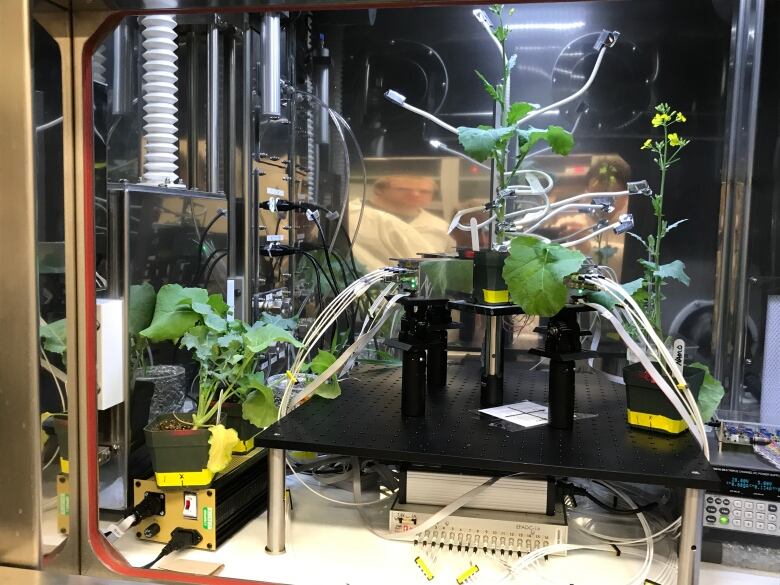Sask. home to new phytoPET device for monitoring crops, plants
With PhytoPET, scientists can see root structure and function without disturbing plants

A new imaging centre in Saskatoon the first of its kind in Canada will help scientists get to the root of what plants do with their roots.
As part of the Plant Phenotyping and Imaging Research Centre, the new phytoPET device will help crop breeders developnew strains of lentils, wheat and canola, said Steven Siciliano, a professor of soil science at at the University of Saskatchewan.

Aram Teymurazyan, an assistant professor of physics at University of Regina, said the phytoPET system is the first positron emission tomographysystem to be dedicated to plants in Canada, and is one of five globally.
With half of Canada's arable land in Saskatchewan, the province is the best place in Canada for such an imaging system, said Siciliano.
The system was installed in Saskatoon because of the need for labellingisotopes, which are produced by the University of Saskatchewan's cyclotron and decay quickly, limiting transport.

"What this technology allows us to do is to visualize the root structure and how the transport of sugar happens in real time, without disturbing the plant, without destroying it, without having to cut it," said Teymurazyan.
The biggest challenges are getting enough visual resolution and being able to accommodate different sized plants.
"Most of the scanners that are being built for nuclear imaging purposes are built to image humans for diagnosis and treatment," he said.
"Plants come in all different sizes and shapes and forms having adaptable geometry for imaging is key."
with files from Albert Couillard












_(720p).jpg)


 OFFICIAL HD MUSIC VIDEO.jpg)
.jpg)



























































































